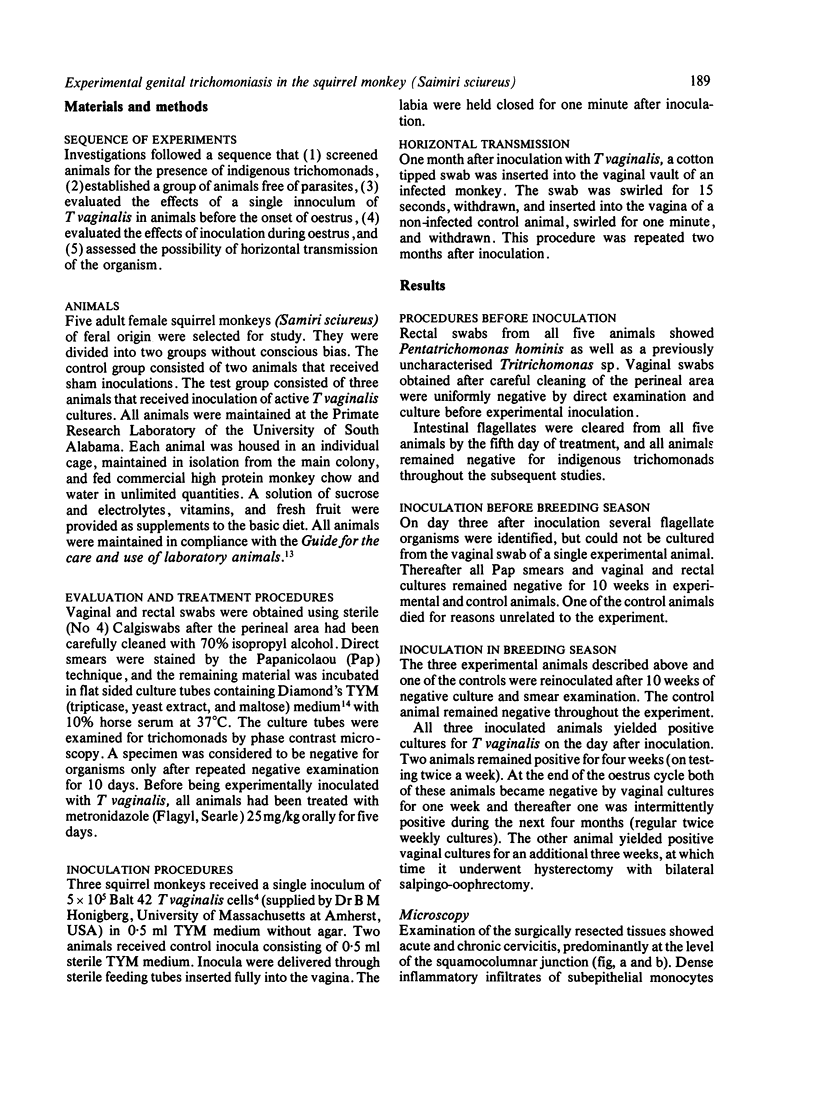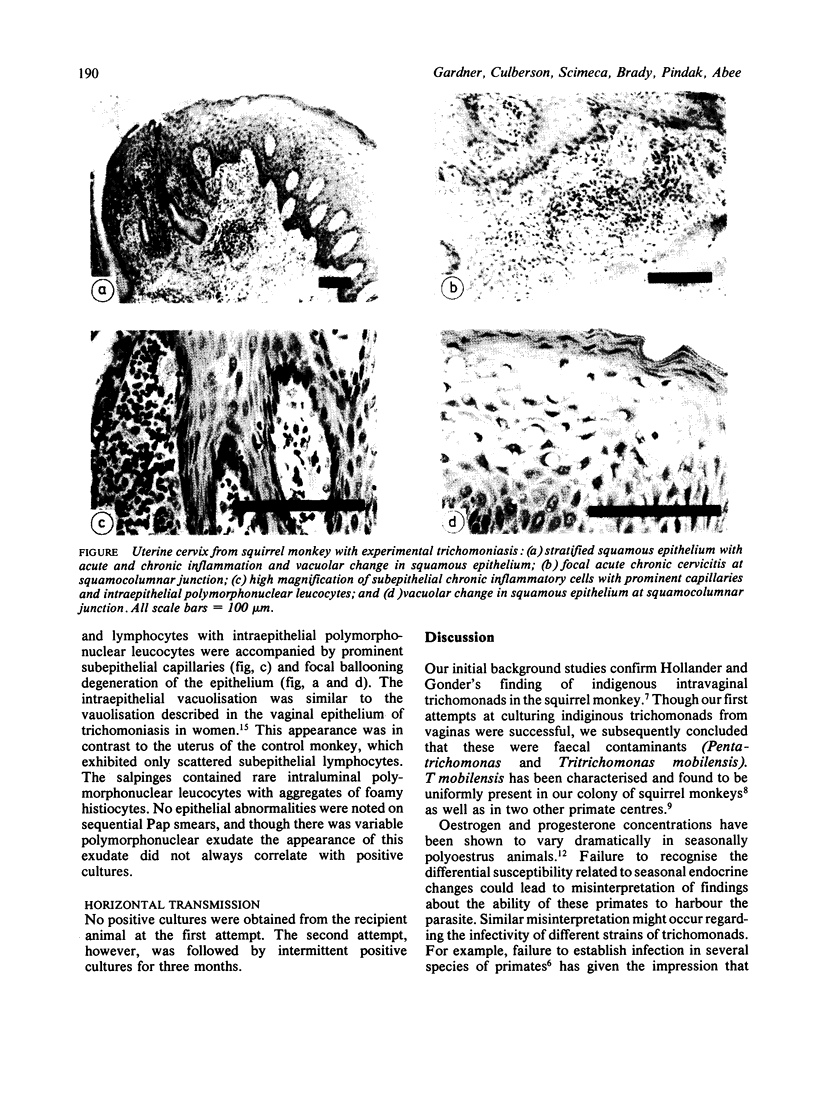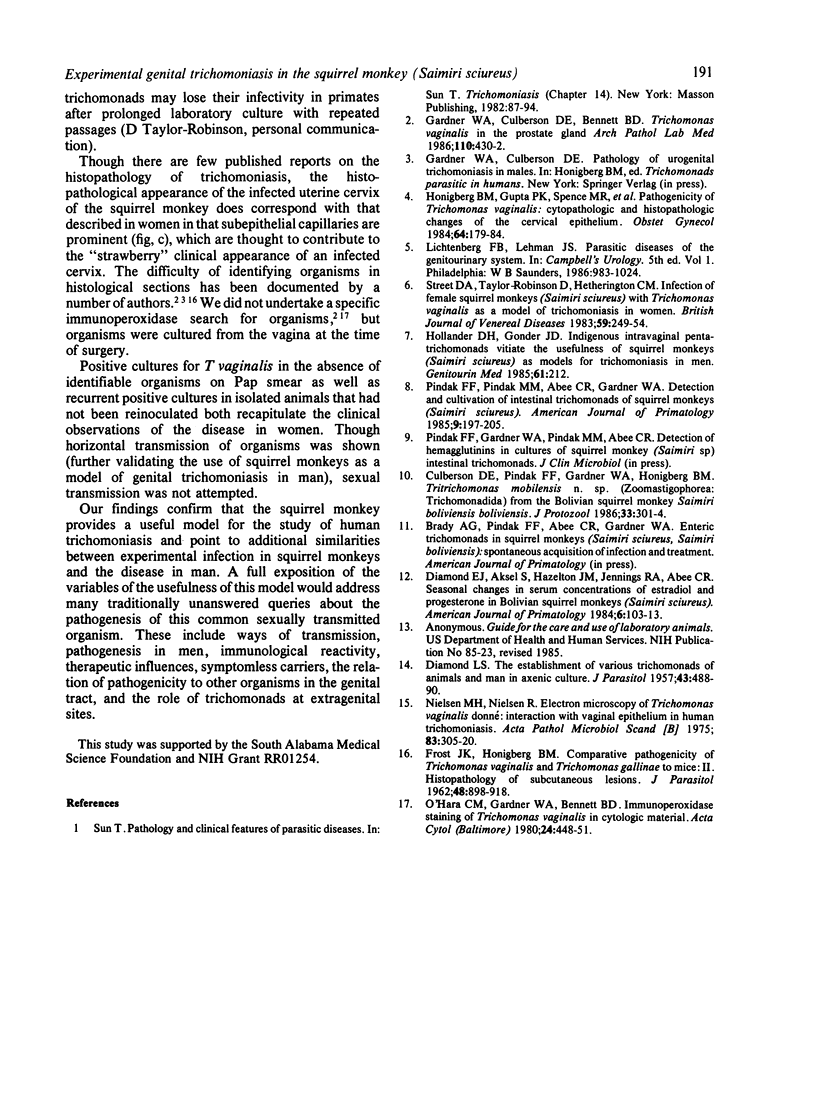Abstract
The squirrel monkey (Saimiri sciureus) has been proposed as a model for urogenital trichomoniasis in man, but has not been accepted as such because of the purported presence of naturally occurring vaginal trichomonads in this animal. The study published here shows that these are easily eradicated organisms of intestinal origin, which eliminates the potential confusion created by them. In addition, our experiments have shown that the hormonal status of primates seems to be a determinant in successfully establishing experimental trichomoniasis. This experimental infection recapitulates the clinical observations sufficiently to warrant the use of this model for studies of vaginal trichomoniasis.
Full text
PDF



Images in this article
Selected References
These references are in PubMed. This may not be the complete list of references from this article.
- Culberson D. E., Pindak F. F., Gardner W. A., Honigberg B. M. Tritrichomonas mobilensis n. sp. (Zoomastigophorea: Trichomonadida) from the Bolivian squirrel monkey Saimiri boliviensis boliviensis. J Protozool. 1986 May;33(2):301–304. doi: 10.1111/j.1550-7408.1986.tb05611.x. [DOI] [PubMed] [Google Scholar]
- DIAMOND L. S. The establishment of various trichomonads of animals and man in axenic cultures. J Parasitol. 1957 Aug;43(4):488–490. [PubMed] [Google Scholar]
- FROST J. K., HONIGBERG B. M. Comparative pathogenicity of Trichomonas vaginalis and Trichomonas gallinae to mice. II. Histopathology of subcutaneous lesions. J Parasitol. 1962 Dec;48:898–918. [PubMed] [Google Scholar]
- Gardner W. A., Jr, Culberson D. E., Bennett B. D. Trichomonas vaginalis in the prostate gland. Arch Pathol Lab Med. 1986 May;110(5):430–432. [PubMed] [Google Scholar]
- Hollander D. H., Gonder J. D. Indigenous intravaginal pentatrichmonads vitiate the usefulness of squirrel monkeys (Saimiri sciureus) as models for trichomoniasis in men. Genitourin Med. 1985 Jun;61(3):212–212. doi: 10.1136/sti.61.3.212. [DOI] [PMC free article] [PubMed] [Google Scholar]
- Koss L. G., Schreiber K., Oberlander S. G., Moussouris H. F., Lesser M. Detection of endometrial carcinoma and hyperplasia in asymptomatic women. Obstet Gynecol. 1984 Jul;64(1):1–11. [PubMed] [Google Scholar]
- Nielsen M. H., Nielsen R. Electron microscopy of Trichomonas vaginalis Donné: interaction with vaginal epithelium in human trichomoniasis. Acta Pathol Microbiol Scand B. 1975 Aug;83(4):305–320. doi: 10.1111/j.1699-0463.1975.tb00107.x. [DOI] [PubMed] [Google Scholar]
- O'Hara C. M., Gardner W. A., Jr, Bennett B. D. Immunoperoxidase staining of trichomonas vaginalis in cytologic material. Acta Cytol. 1980 Sep-Oct;24(5):448–451. [PubMed] [Google Scholar]
- Street D. A., Taylor-Robinson D., Hetherington C. M. Infection of female squirrel monkeys (Saimiri sciureus) with trichomonas vaginalis as a model of trichomoniasis in women. Br J Vener Dis. 1983 Aug;59(4):249–254. doi: 10.1136/sti.59.4.249. [DOI] [PMC free article] [PubMed] [Google Scholar]



